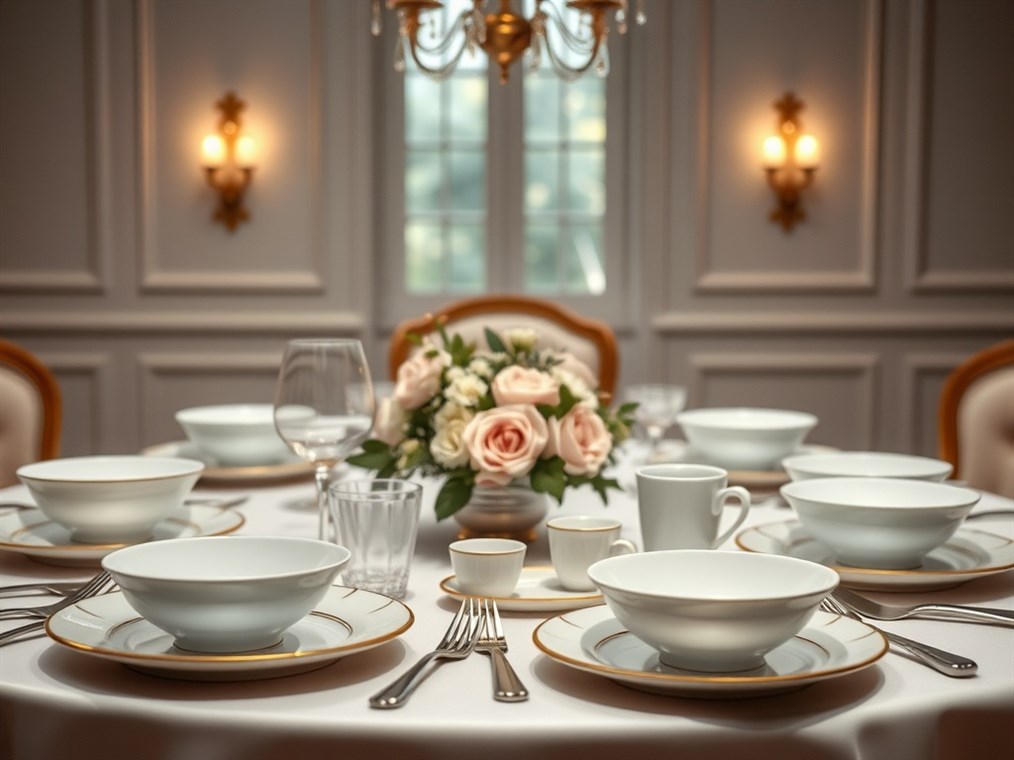Is Porcelain Safe? Let’s Dish About Dinnerware
Porcelain. It’s that elegant material we often associate with fancy dinner parties and delicate teacups. But in a world where we’re all a little more conscious about what’s safe, it’s natural to wonder: is porcelain actually non-toxic? Let’s dive in and get the real scoop.
So, what exactly is porcelain, anyway? Well, it’s a type of ceramic, but not just any ceramic. Think of it as the high-achiever of the ceramic family. It’s made by firing special clays at scorching temperatures – we’re talking over 2,000 degrees Fahrenheit! This intense heat gives it that signature strength, a beautiful translucent quality, and a bright white color.
Now, let’s talk ingredients. Porcelain’s basically a mix of a few key players: kaolin, which is a super soft, white clay; feldspar, a crystal-like mineral that helps everything melt together nicely in the kiln; and quartz, which adds some serious muscle to the final product.
Here’s where things get a little tricky. While porcelain itself is generally considered safe as houses, the glazes used to give it that glossy finish can sometimes contain heavy metals like lead and cadmium. Lead, in particular, was a popular choice back in the day for creating that super smooth, shiny surface. The problem? Lead can leach out, especially if the glaze is damaged or if you’re using it with acidic foods. Not good.
Leaching – it’s basically when those not-so-great substances sneak out of the porcelain and into your food or drink. Think of it like this: you wouldn’t want your lasagna to have a side of lead, right? This is more of a concern with older pieces, especially those made before the mid-1970s. Also, if your favorite mug has a chip or crack, that’s basically an open invitation for leaching to occur. And those yummy, acidic foods like tomatoes or citrus? They can actually encourage those heavy metals to come out and play.
Thankfully, things have changed a lot over the years. Nowadays, most manufacturers use lead-free glazes. Plus, there are regulations in place to keep those heavy metal levels in check. It’s good to know someone’s watching out for us, right?
Porcelain pops up in all sorts of places, from your everyday dinner plates to fancy dental work. So, let’s break down the safety considerations for each:
- Dinnerware: This is where it matters most. If you’re using vintage plates, give them a good once-over for any damage.
- Dental Porcelain: Sometimes, metals like aluminum or zirconium are added for extra strength. If you’ve got sensitivities, it’s worth chatting with your dentist about it.
- Decorative Items: While you’re not eating off them, be careful of broken pieces. You don’t want to be breathing in any dust particles.
- Colored Porcelains: Those vibrant colors come from pigments that can contain metal oxides. But modern techniques are pretty good at keeping those pigments locked down tight.
Alright, so what can you do to make sure you’re using porcelain safely? Here are a few simple tips:
- Go Modern: When buying new dinnerware, look for pieces that are labeled “lead-free.”
- Inspect Those Heirlooms: Love that vintage china? Check it for cracks or chips.
- Be Acid-Aware: Maybe don’t serve your famous tomato sauce on your antique plates.
- Look for the Seal of Approval: Keep an eye out for certifications from trusted organizations.
So, how can you tell if your porcelain is the safe stuff?
- Read the Fine Print: Look for labels that scream “lead-free” and “cadmium-free.”
- Give It a Good Look: Make sure that glaze is smooth, like a skating rink, and without any cracks.
- Do Your Homework: Pick brands that are upfront about their manufacturing.
- Shop Smart: Buy from stores you trust to have your back when it comes to safety.
- Sniff Test: Any weird smells? That’s a red flag that something’s not right.
- Give It a Bath: Before you use it, give it a good boil or soak in vinegar to help flush out anything nasty.
Bottom line? Porcelain, especially the stuff made today, is generally safe to use. But it pays to be informed, especially when it comes to older pieces. A little bit of knowledge can go a long way in giving you peace of mind. So, go ahead and enjoy that tea party – just maybe not on Grandma’s chipped china!

